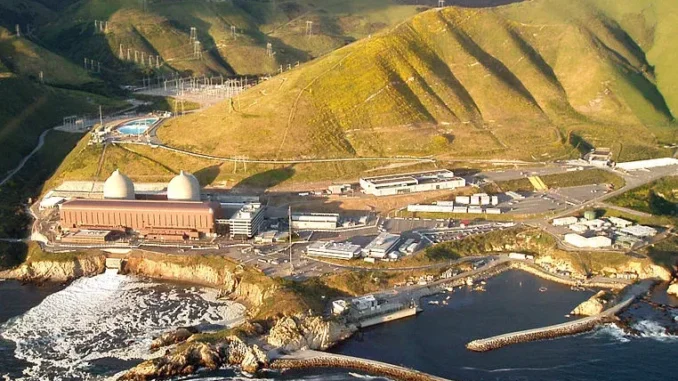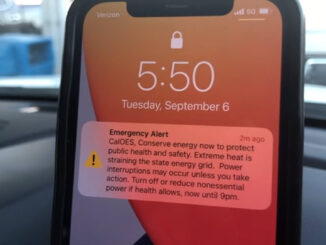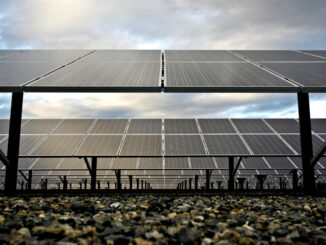
In a few weeks it will be one year since the article “California just hit 95% renewable energy. Will other states come along for the ride?” appeared in the Los Angeles Times. Its author, reporter Sammy Roth, had learned that California briefly generated 95% of the electricity consumers were using from renewable sources a few days earlier, and he was elated. Either he believed, or he wanted us to believe, that it was only a matter of generating 5% more of our energy from wind turbines and solar panels and California would cease emitting greenhouse gases into the atmosphere. We would achieve something no other country, city, or community worldwide had achieved before.
Like the rings of a tree, veteran energy watchers know that a time-graph of electricity consumption on an electrical grid tells a story. All of its curved lines, from one moment to the next, are interrelated – when one goes down, it might cause another to go down; two others might appear to be linked – but every shape has a part to play. Though I knew Sammy’s claim wasn’t true, I had to know why it wasn’t it true – why it couldn’t have happened, even for four seconds.
I started by downloading graphs of what happened on April 24, 2021 – precise figures for supply (generation) and demand (consumption), available at the website of the California Independent System Operator (CAISO). As you’ll see, it didn’t require much investigation before the monument to solar and wind energy Roth had erected would start to crumble.
The graph below was cobbled together from several others. Some explanation:
- Time moves from left to right. The left side corresponds to 12:00 AM on April 24, the right corresponds to 12:00 AM the next morning.
- The blue line at the top shows electrical demand, measured in megawatts (MW) – the amount of power California consumers were using at each moment of the 24-hour day.
- The other lines below it show supply – how CAISO is meeting demand (at any time, the heights of all the other lines combined are equal to the height of the blue one).
- For four seconds at about 2:30 PM (red vertical line), California solar and wind generated 94% as much electricity as customers were consuming.
- At the same moment, however, natural gas plants were generating 3,442 MW and Diablo Canyon Power Plant was generating 1,144 MW – together with renewables, there was too much supply.
- If supply doesn’t precisely match demand on an electric grid, it can cause a system-wide outage. Thus California had to export 2,489 MW to keep the grid from going down (dark red line).
- Because Arizona, Nevada, and Oregon didn’t need or want our electricity, we had to pay them to take it (euphemistically labeled “negative pricing”). It’s an expense borne by California electricity customers.
- During peak consumption (8 PM), wind and hydro are the only significant renewable resources available. Solar is providing no electricity at all.
- At that time, when electricity is most expensive, California is forced to import more than 1/4 of its electricity from other states.
” alt=”” aria-hidden=”true” />

Q: Why are natural gas plants running at all, if there’s too much renewable electricity?
A: Because solar and wind are unpredictable, fast-starting gas turbines must operate in “spinning reserve” to smooth their output. If a cloud covers the sun over a solar farm gas turbines must ramp up to fill in the gap in generation. Or, if the wind suddenly picks up at a large wind farm, they must ramp down to prevent overloading the grid.
Q: Then we can’t just power the grid with solar and wind?
A: That’s correct. Powering a grid with either requires natural gas to be at the ready, to smooth out any abrupt changes that may occur.
Q: Why does solar energy flatten out in the middle of the day, when the sun is high in the sky?
A: Because solar would produce too much electricity at mid-day, system operators are forced to curtail solar – to request operators shut their farms down. And solar farms are paid to turn off their output – another expense borne by California electricity customers for which they receive nothing of value.
Q: So, having “free” solar and wind is more expensive than without it? And having renewables on the grid actually forces us to burn more fossil-fuel gas?
A: Yes, and yes.
Q: What about batteries? Can’t they fill in the blanks for solar and wind?
A: No. Electricity produced by all grid-scale batteries in California is shown by the yellow line (it’s hiding behind the graph’s x-axis). For the purpose of making any significant contribution to grid electricity, batteries are useless.
California’s nuclear plant, Diablo Canyon, is scheduled to permanently close in November 2025, to allow investors to build other more profitable ways to generate electricity. Now, when they tell you their ways will lower carbon emissions and you tell them they’re wrong, you’ll be able to tell them why.



